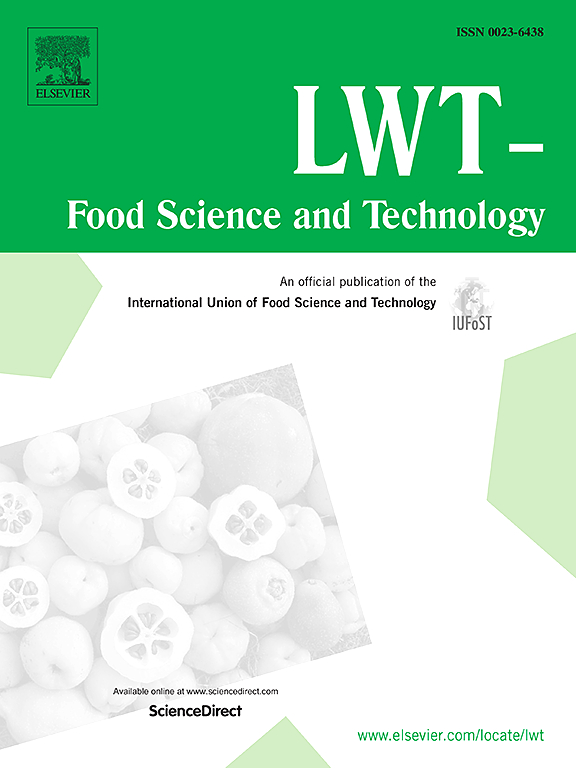白甘蓝废渣粉改善了无麸质大米面包条的功能和营养特性
IF 6
1区 农林科学
Q1 FOOD SCIENCE & TECHNOLOGY
引用次数: 0
摘要
水果和蔬菜的工业化生产会产生大量富含生物活性化合物的有机残留物。在本研究中,白甘蓝粉(WCP)被用于部分替代米粉(5%、10%、20%和 30% w/w)来配制无麸质面包条。对混合面粉的理化性质(水分含量、吸水吸油能力)、粘贴性和抗氧化性(还原糖、总酚和 DPPH 清除能力)进行了评估。通过分析面团流变学、理化特性(Aw、颜色、质地)和抗氧化特性,对面包条的质量进行了评估。添加 WCP 后,吸水和吸油能力得到提高,而粘贴性能却有所下降。动态振荡试验表明,添加 WCP 增加了 G′和 G″值。与对照配方相比,添加 WCP 后颜色属性也有明显改善,而面包条的硬度则有所降低。添加 WCP 后,面包条的营养特性有所改善,这可以从添加蔬菜粉后混合食品和面包条获得的更好的抗氧化特性推断出来。总之,这项研究表明,可以建议将 WCP 用作功能性食品配料,以提高新型米基无麸质面包条的营养特性。本文章由计算机程序翻译,如有差异,请以英文原文为准。
White cabbage waste powder improves gluten-free rice-based breadsticks functional and nutritional characteristics
Fruit and vegetable industrialization generates large amounts of organic residues abundant in bioactive compounds. In the present work, white cabbage powders (WCP) were used to partially replace rice flour (5, 10, 20 and 30% w/w) in the formulation of gluten-free breadsticks. Physicochemical (moisture content, water and oil absorption capacity), pasting, and antioxidant properties (reducing sugars, total phenols and DPPH scavenge ability) were evaluated in flour blends. Breadsticks quality was evaluated by analysing dough rheology, physicochemical (aw, colour, texture) and antioxidant properties. Water and oil absorption capacities improved with WCP addition, whereas pasting properties worsened. Dynamic oscillatory tests revealed that WCP incorporation increased G′ and G″ values. Colour attributes were also significantly modified with WCP addition, whereas breadsticks hardness reduced compared to control formulation. Nutritional properties of breadsticks improved with WCP addition, as deduced from the better antioxidant characteristics obtained for both blends and breadsticks, when vegetable powders were added. In conclusion, this study reveals that WCP can be suggested as functional food ingredient to increase the nutritional properties of new, rice-based gluten-free breadsticks.
求助全文
通过发布文献求助,成功后即可免费获取论文全文。
去求助
来源期刊

LWT - Food Science and Technology
工程技术-食品科技
CiteScore
11.80
自引率
6.70%
发文量
1724
审稿时长
65 days
期刊介绍:
LWT - Food Science and Technology is an international journal that publishes innovative papers in the fields of food chemistry, biochemistry, microbiology, technology and nutrition. The work described should be innovative either in the approach or in the methods used. The significance of the results either for the science community or for the food industry must also be specified. Contributions written in English are welcomed in the form of review articles, short reviews, research papers, and research notes. Papers featuring animal trials and cell cultures are outside the scope of the journal and will not be considered for publication.
 求助内容:
求助内容: 应助结果提醒方式:
应助结果提醒方式:


